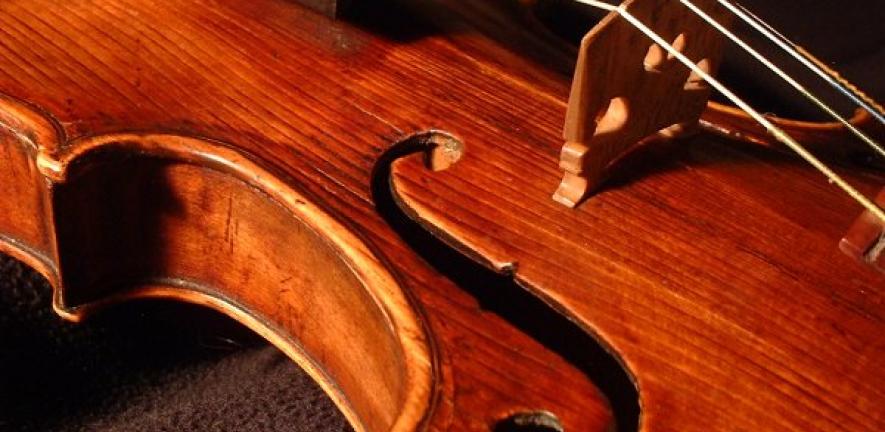
The screeching produced by children starting out on the violin has curdled the blood of many a parent over the centuries. A pre-concert talk at the Science Festival asks what science can tell us about why the violin is so hard to play.
The screeching produced by children starting out on the violin has curdled the blood of many a parent over the centuries. A pre-concert talk at the Science Festival asks what science can tell us about why the violin is so hard to play.
Virtuosos will probe the boundaries for the best tone
Jim Woodhouse
It was as a mathematics undergraduate in the early 1970s that Jim Woodhouse came across Cambridge’s amateur violin making workshop. Always a keen ‘maker’ of things, Woodhouse developed a love of crafting string instruments that quickly spilled into his academic life, as he went on to do a PhD at the University in noise and vibration theories - focusing on the violin.
These days a Professor in the Department of Engineering, as well as a self-confessed “bad cellist”, Woodhouse maintains a keen interest in both instrument-making and the science of acoustics, and will be giving a pre-concert talk for the Science Festival at the West Road Concert Hall on Friday 8 March.
The talk will be followed by a virtuoso violin performance from Magdalena Fitzpatrick, accompanied by the Cambridge Graduate Orchestra.
Woodhouse compares violins to guitars. Both are essentially wooden boxes with strings, although played in different way, but a note on a guitar, even if wrong, still sounds musical. “You can do bad things aurally with violins that simply aren’t possible with guitars, a fact painfully obvious to parents of children beginning to learn,” says Woodhouse. “But what is it about ‘bowing a string’ that makes a musical sound that much harder to produce?”
A violin player controls three things: the speed of the bow, the downward force applied, and position of the bow on the string. According to Woodhouse, once you choose speed and position, it is the force that primarily dictates whether the result approaches a musical note or spits out a wince-inducing “graunch” noise.
This force-based window of ‘musicality’ grows ever-slimmer as the bow moves up to the bridge, an analysis first plotted in graphical form by former Bell Telephone scientist and pioneer of violin acoustic research John Schelleng in the 1960s.
“Relatively inexperienced players need to try and learn to be comfortable hovering in the middle of this space, staying away from the minimum and maximum, but virtuosos will probe the boundaries for the best tone,” says Woodhouse.
“These factors feed into the idea of ‘playability’ of specific instruments,” says Woodhouse. Some violins are a great deal more valuable than others, but why is this?
“One aspect is ‘beauty of sound’, which is difficult to address in scientific terms as it comes down to peoples’ perceptions. But ease of playing is also a major factor. Whether an instrument is more accommodating in terms of the Schelleng model is one facet of that, and one that lends itself more easily to scientific investigation.”
Issues of playability have been the subject of increasingly sophisticated mathematical modelling, enabling computer simulations to show how strings on particular violins will respond to certain bow gestures. These techniques are increasingly used to explore design questions, but also in accurate electronic instruments - the virtual violin.
But for Woodhouse, nothing can replace a finely crafted instrument, and the evening class he took forty-odd years ago has gone from strength to strength - the Cambridge Violin Makers still run one of the country’s top violin crafting workshops and summer schools.
“I still love to work on musical acoustics from time to time. In fact, I’ve got a current violin PhD student at the moment, and it’s always popular with undergraduates as well as a great outreach subject.”
The talk and concert take place at West Road Concert Hall on the evening of Friday 8 March. For more information, please visit the Science Festival website.
This work is licensed under a Creative Commons Licence. If you use this content on your site please link back to this page.





